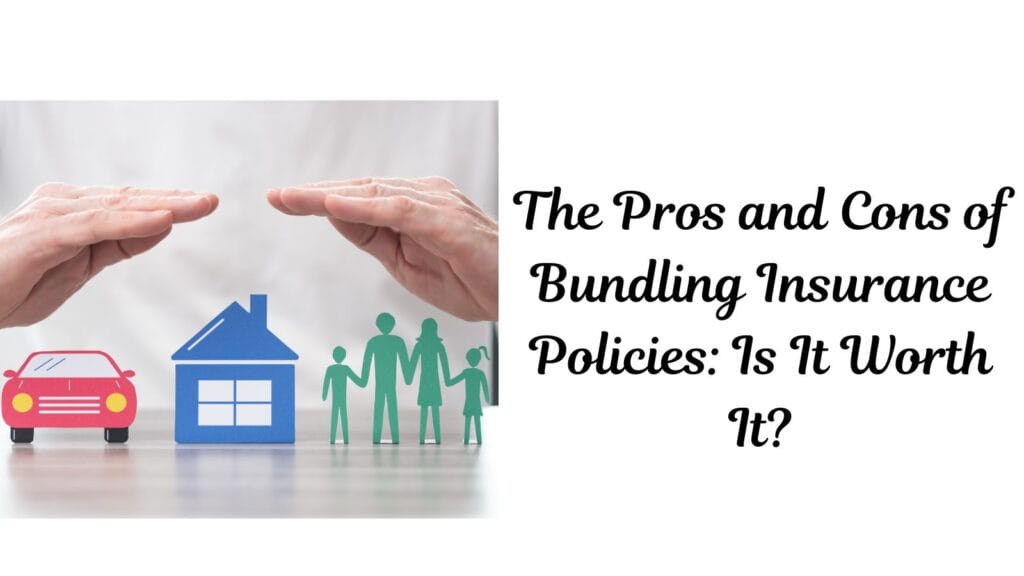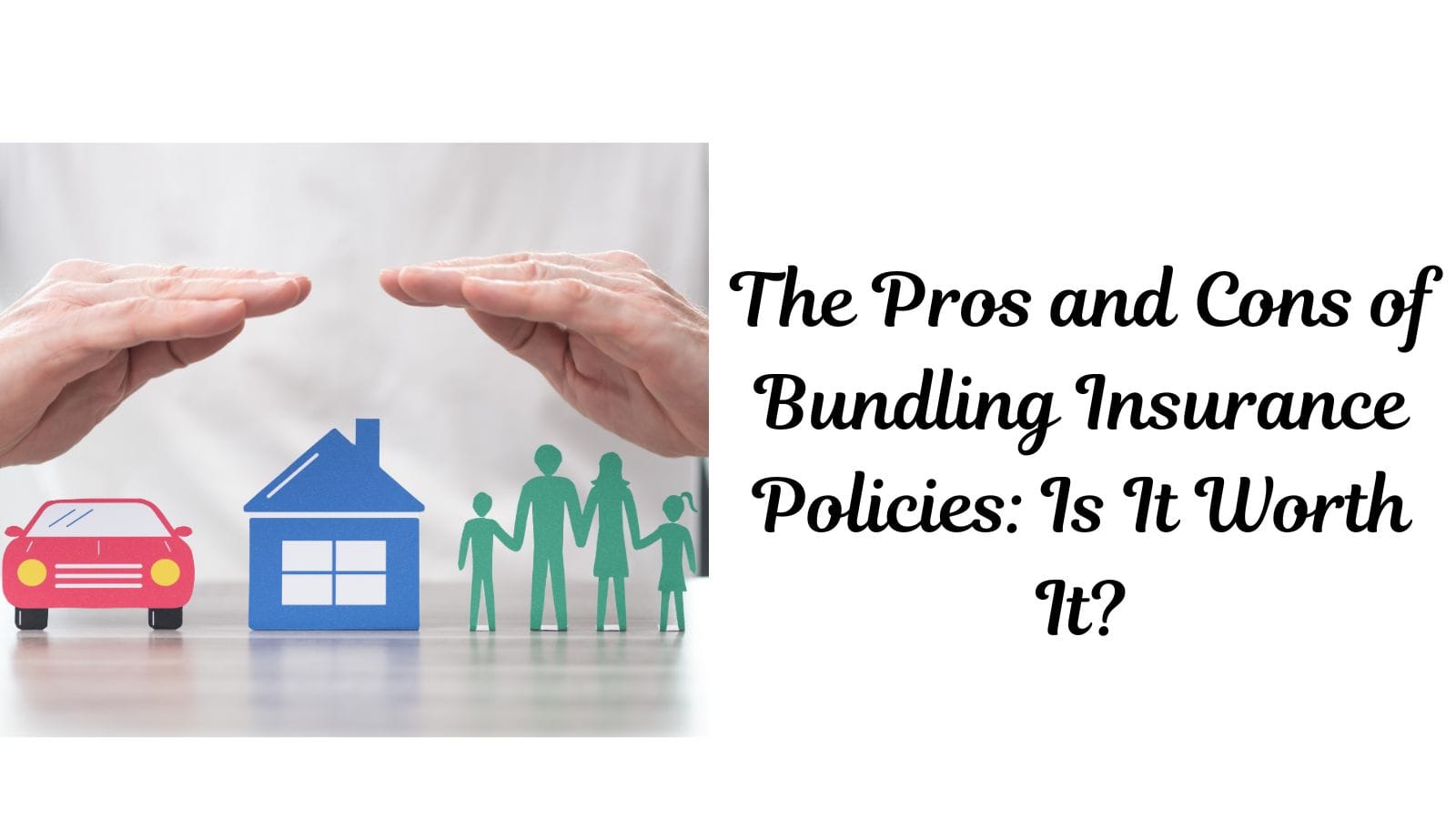Today, many experts suggest bundling insurance policies with one provider. This can include auto, home, life, or renters’ insurance. Insurance bundling means buying different types of insurance from one company. This often offers discounts, simplicity, and more convenience. For many consumers, bundling policies is considered an easy way to save money and manage various insurance needs under one roof.
But, is bundling insurance really worth it? Bundling can save you money and provide benefits. But, it’s important to weigh the pros and cons. This way, you can see if it fits your needs and financial goals.

In this article, we’ll explore insurance bundling. We’ll look at its pros and cons. By the end, you’ll know if it’s the right choice for you. We’ll also provide real-world examples, data-driven insights, and expert advice to help you make an informed decision.
1. What Is Insurance Bundling?
Insurance bundling means buying two or more insurance policies from the same company. Commonly bundled policies include:
- Home and Auto Insurance: Many consumers choose to bundle home and auto insurance policies to take advantage of discounts.
- Life and Auto Insurance: Some insurers offer bundled packages that include life insurance and auto coverage.
- Home and Life Insurance: Bundling life insurance with homeowners insurance can save you money. It can also make things simpler, even though it’s less common.
If you buy both auto and home insurance from the same company, you might get a 10% discount on each policy. Many insurers give discounts to customers who bundle their policies. These discounts can be significant, sometimes leading to hundreds of dollars in savings.
2. The Pros of Bundling Insurance Policies
Insurance bundling can be an attractive option for many people, thanks to the several advantages it offers. Below are the key benefits of bundling your policies.
2.1 Cost Savings
The most significant advantage of bundling insurance policies is the potential for cost savings. Insurance companies often reward customers who buy multiple policies from them with discounts. These savings can range from 5% to 25%, depending on the insurance provider and the types of policies being bundled. For example:
- Auto and Home Bundling: If you bundle your auto and home insurance with a single provider, you might receive a 10% to 20% discount on each policy.
- Life Insurance Bundling: Some providers offer discounts if you bundle life insurance with other policies. However, these savings may be less than those for auto and home bundles.
Real-Life Example: Sarah, a homeowner and a car owner, bundled her home and auto insurance policies with State Farm. By doing so, she saved $450 annually, which helped her offset the cost of her home renovation. These savings came from the 20% discount that State Farm offered for bundling both policies.
2.2 Convenience and Simplification
Managing multiple insurance policies with different providers can be cumbersome. This means fewer bills to keep track of, a single renewal date, and one point of contact for claims or inquiries.
If you have home and auto insurance from the same provider, you only deal with one company. This makes customer service, claims, and renewals easier. This simplification saves time and reduces the likelihood of confusion or missed payments.
Fun Fact: A survey from the National Association of Insurance Commissioners (NAIC) showed that 70% of consumers found bundling policies made it easier to manage their insurance. This made it easier for them to manage their needs.
2.3 Easier Claims Process
When you bundle your insurance policies, the claims process often becomes smoother. This is because the same insurance company is handling all your claims, and they are already familiar with your history and policies. When a claim covers different types of damage, like your home and car, bundling can help. It makes the resolution process smoother and speeds up how quickly you settle the claim.
2.4 Access to Special Coverage Options
Bundling policies can give you special coverage options. You might not find these if you buy policies separately. Some providers offer “blanket” policies. These cover multiple risks, like home and auto, all in one. They may also provide extra options, such as identity theft protection or umbrella insurance, at discounted rates.
Real-Life Example: John, a small business owner, bundled his home, auto, and business insurance policies with Geico. He got a 15% discount on his premiums. Plus, he received a special offer for umbrella insurance. This gave him extra liability coverage beyond his other policies.
3. The Cons of Bundling Insurance Policies
While bundling your insurance policies can provide many benefits, it’s essential to be aware of the potential drawbacks as well. Below, we explore the disadvantages of bundling that may affect some consumers.
3.1 Limited Choice and Flexibility
When you bundle your insurance policies, you may be restricted to the provider’s offerings. If you bundle auto, home, and life insurance with one company, you may face limits. These limits can include coverage options, discounts, and exclusions they provide. Switching to another company for a better deal or coverage can be tricky. You might lose your bundling discount in the process.
Real-Life Example: Tom bundled his auto, home, and life insurance with an insurer that provided an attractive discount. He searched for a better life insurance deal. He discovered another company had a more complete policy for less money. Unfortunately, he couldn’t switch without losing his bundling discount.
3.2 Possible Higher Premiums on Certain Policies
Bundling often gives discounts, but some consumers may see higher premiums on certain policies. This can occur if the insurance company raises rates for bundled policies or if the discounts do not fully offset the price increases. It’s important to review all policy costs to ensure you’re truly saving money in the long run.
3.3 Inflexibility in Switching Providers
Bundling ties you to one insurance company for multiple policies. If you’re not happy with the coverage or service, switching providers can be tricky. You might lose your bundling discount by breaking the bundle. This may cause coverage disruptions or require extra work to find new, affordable policies.
Real-Life Example: Lila, a homeowner, had her home and auto insurance bundled with the same provider. When she found that another insurer was offering lower premiums for her auto insurance, she decided to switch providers. Unfortunately, she lost the bundling discount and ended up paying more for her home insurance.
3.4 Potential for “One-Size-Fits-All” Coverage
Insurance companies offering bundled policies might offer a “one-size-fits-all” approach. This can mean that you receive generic coverage that doesn’t necessarily meet your unique needs. If your home insurance in a bundle doesn’t cover certain natural disasters or damages, you might need extra coverage. This could take away the savings you expected from bundling.
4. How to Decide If Bundling Is Right for You
Before deciding to bundle your insurance policies, consider the following:
- Evaluate Your Needs: Do you require all of the types of insurance you are considering bundling? If you only need auto insurance, bundling it with life and home insurance may not be beneficial.
- Compare Prices: Always check individual policy prices, even with a bundling discount. This way, you can be sure you’re getting the best deal.
- Check Coverage Options: Ensure your bundled policies meet your specific needs. You may find that bundling gives you insufficient coverage on one of your policies.
Conclusion: Is Bundling Worth It?
Bundling insurance policies has many benefits. You can save money, enjoy convenience, and make claims easier. For many people, it is a straightforward way to simplify insurance management and save money. It’s important to know the downsides. You may have less flexibility, pay higher premiums for some policies, and risk inadequate coverage.
Before you decide if bundling is right for you, think about your needs. Compare each policy option. Also, consider the long-term value of bundling. Bundling can save you money and offer convenience. However, sometimes it’s better to shop around for the best coverage and premium.
In the end, whether bundling is worth it will depend on your personal situation and insurance needs. Be sure to carefully weigh the pros and cons before making a decision.
The Gig Economy and Insurance: Do Freelancers Need Special Coverage?
FAQs
Bundling insurance means buying different types, like auto, home, and life, from one provider. This can help you save on your premiums.
While bundling often leads to discounts, it’s important to compare prices and coverage. Sometimes, the bundled premium is higher than buying separate policies from different providers.
Yes, many insurance companies let you bundle different types of coverage. You can combine home, auto, life, and renters insurance into one package. This makes it easier and can save you money.
Some downsides are:
Limited flexibility
Higher premiums for some policies
Basic coverage that may not fit your needs
To see if bundling works for you, check the total cost of bundled policies versus separate ones. Look at your coverage needs and make sure the provider’s options fit what you need.
